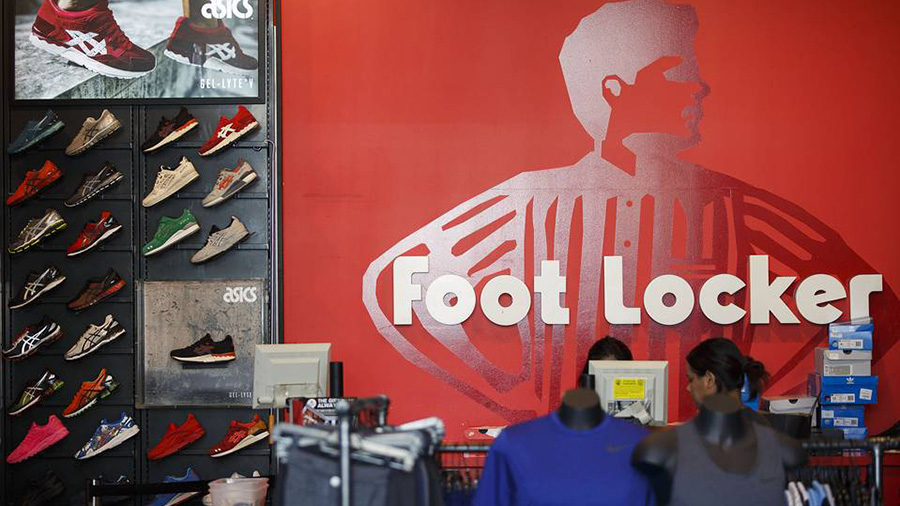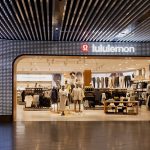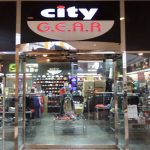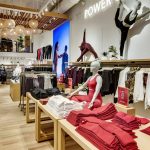Shares of Foot Locker rose 10.1 percent Thursday after Piper Sandler & Co. upgraded the retailer from “Neutral” to “Overweight.”
Piper senior analyst Abbie Zvejnieks believes the FL’s turnaround potential compares favorably to other turnaround stories in the active lifestyle space, including Allbirds, Under Armour, VF Corp., and Wolverine Worldwide.
Piper raised its price target on Foot Locker to $33 from $24. On Thursday, shares jumped $2.87 to $31.40.
Zvejnieks noted that investors have shifted from seeking out “winners” in consumer stocks, including Walmart, TJX Cos., Lululemon, and Deckers, to “names that have struggled.”
 Zvejnieks and her team analyzed FL’s prospects against Allbirds, Under Armour, VF Corp., and Wolverine Worldwide based on metrics, including debt levels, consensus expectations, inventory management, valuation, cost savings initiatives, and key management changes.
Zvejnieks and her team analyzed FL’s prospects against Allbirds, Under Armour, VF Corp., and Wolverine Worldwide based on metrics, including debt levels, consensus expectations, inventory management, valuation, cost savings initiatives, and key management changes.
Zvejnieks said, “We come away incrementally more positive on FL’s margin expansion opportunity in 2024, and while we don’t yet have clarity on the return to growth of NKE product, we think FL is best positioned among this group in the next 6-12 months.”
Reviewing the five companies across the criteria, Zvejnieks said Under Armour had the “cleanest balance sheet” with no net debt, followed by Foot Locker, which is expected to have no debt by the end of 2024.
On inventory management, each of the five companies is expected to have inventory flat to down on a year-over-year basis by the end of 2023. Zvejnieks said, “Inventory is still broadly elevated compared to 2019, but VFC, BIRD,and WWW have the highest inventory growth to sales growth spreads compared to 2019. UAA seems to be in the best position, with FL in the second-best position.”
On valuation, Piper slightly lowered its revenue estimate for Foot Locker for FY24 by about 1 point below consensus, given macro challenges and the reset at Champs. At the same time, Piper raised its operating margin expansion assumption on Foot Locker to 183 basis points compared to Wall Street’s consensus for 86 basis points of improvement, given the retailer’s potential to improve margins.
On an EV/EBITDA basis, Foot Locker is well-positioned given its cash flow expectations in 2024.
Regarding each company’s cost-savings plan, Foot Locker expects to achieve approximately 50 percent of costs initiatives by the end of 2023, “which gives us confidence in execution,” while Piper sees VF’s cost-cutting goals as achievable given its scale. Allbird’s and Wolverine’s cost savings assumptions “look more aggressive as a percent of sales and could be difficult to achieve if there were incremental topline weakness.”
Finally, in grading management, Zvejnieks said all the turnaround situations have involved management changes. She said VF’s hire of Bracken Darrell is seen as “a particularly strong leader” but added that Piper is “most encouraged by the entire leadership team upheaval at FL.”
Zvejnieks noted that while “turnarounds are difficult and even more difficult in a challenging macro,” Piper has “heard some early commentary” that spending by lower-income consumers could be starting to recover with still-low unemployment and inflation coming down.
“We are actually starting to see some deflation in certain categories, including apparel, which should be a tailwind for FL’s customers,” said Zvejnieks. “Now that industry-wide inventory levels should be healthier by the end of the year, we think FL can bring in newness and pivot the assortment to give consumers trending products from brands such as New Balance, Adidas and Nike.”
By comparison, the analyst believes Allbirds, Under Armour, VF, and Wolverine “all have product or brand perception issues which take longer to fix.”
On margins, Zvejnieks said Piper believes Foot Locker could realize 180 basis points of operating margin in 2024 after losing 250 basis points of operating margin in 2022 and projected to face 300 basis points of merchandise margin pressure in 2023 due to higher promotions. The analyst said, “We acknowledge that the pace of recovery on markdowns will largely be dictated by macro, but cleaner inventory levels broadly should be a tailwind.”
Zvejnieks also noted that LaceUp investments “were front-end loaded, which will be an SG&A tailwind,” with other planned cost-cutting initiatives expected to support margins.
Piper’s EPS estimate of $2.27 for FY24 is 33 cents above consensus of $1.94.
Zvejnieks said there’s still little “clarity on the return to growth with Nike,” as the company’s management indicated on its last quarter call, “We continue the reset of our business with Foot Locker, planning for near-term sales declines as they invest in consumer right concepts for the future.”
However, Piper was encouraged that Foot Locker’s relationship with Nike is improving given Nike athlete Kevin Durant’s involvement in Foot Locker’s Heart of Sneakers campaign, Foot Locker management’s recent comments that the retailer is scaling key basketball silhouettes from Nike and Jordan ahead of holiday selling and Piper’s checks pointing to improved availability of Air Jordan 1 and Dunk.
Zvejnieks added, “We are also seeing FL participate in high heat launches this quarter of products such as Kobe 6 Protro ‘Reverse Grinch’ and Jordan Retro 11 ‘Gratitude.’ That said, we are encouraged by expansion in stores of non-Nike product, including greater product breadth of New Balance, Adidas, UGG, Hoka, and On Running. We think heat around new product at NB and Adidas will be a tailwind to non-Nike sales growth and could become a bigger offset to Nike allocation challenges.”
Photos courtesy Foot Locker, Piper Sandler
















